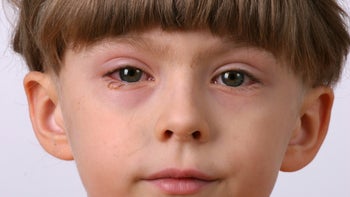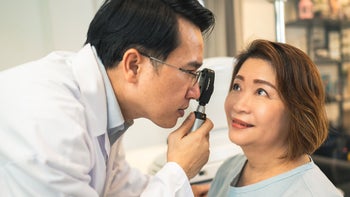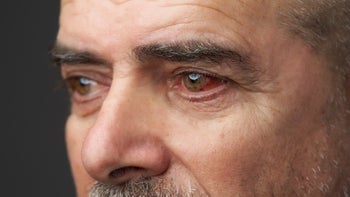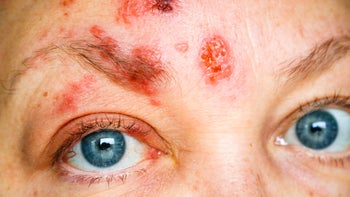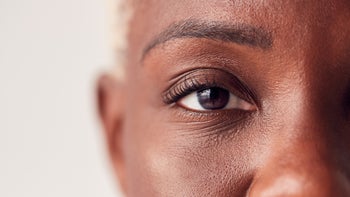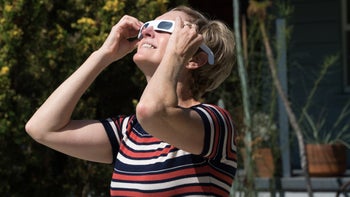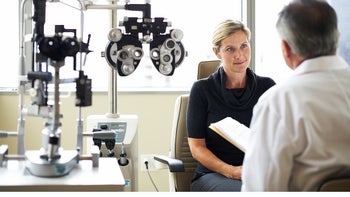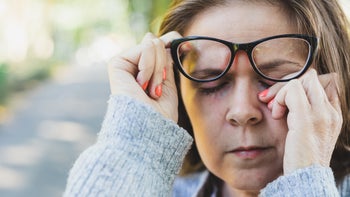
How to Get Rid of a Stye Fast
Key takeaways:
A stye is a painful eyelid bump. Styes usually go away on their own within 1 to 2 weeks.
Warm compresses and eyelid scrubs can help a stye heal faster.
Don’t pop a stye — it won’t get rid of your stye fast. Popping spreads bacteria into your eye and can lead to a serious eye infection.

Styes are irritating, painful bumps that develop on the eyelid. A stye (also called a hordeolum) can also cause eyelid redness and swelling, as well as eye discharge.
Styes form when your eyelid’s oil glands get infected with bacteria. Styes often get better on their own. But this can take 1 to 2 weeks. You can help speed up the healing process with some home remedies and medications.
There’s no way to get rid of a stye instantly. But these four tips can help you get rid of your stye faster.
Be prepared with Prolensa
Prolensa treats inflammation and reduces eye pain in patients after cataract surgery. Uninsured patients may pay as little as $80 copay for up to a 60-day supply.

1. Apply a warm compress
A warm compress encourages the clogged eyelid glands to open up. This lets out the dead skin cells and other debris that are causing swelling and pain. For best results, apply a warm compress directly to the stye for 10 minutes, about 3 to 4 times per day.
Most people make warm compresses at home by running a clean cloth under warm water. But wet washcloths cool off quickly — and you’ll want to make sure the warmth lasts the full 10 minutes. Instead, you can a make a warm compress with dry rice and a clean sock:
Fill a clean sock with dry rice and tie it off at one end.
Microwave the filled sock for 15 seconds.
Check to make sure the sock isn’t too hot by testing it on your hand.
Place your warm compress over your stye for 10 minutes.
You can also buy reusable masks made especially for eyes. Some brands that sell microwavable eye masks include Bruder, OCuSOFT, and Optase. These have beads inside the mask that hold heat, so you get the maximum benefit from your warm compress.
2. Clean your eyelids
Like warm compresses, eyelid scrubs can also remove buildup of dead skin cells and open up oil glands.
You can make your own eyelid scrubs at home:
First, mix baby shampoo in warm water.
Then, wash your hands and dip a clean washcloth in the mixture.
Using the washcloth, gently rub the base of your eyelashes for about 15 seconds.
You can also gently rub your stye for about 10 seconds while doing your eyelid scrub. Gentle massage can help open your eyelid gland so debris can get out.
You can use eyelid scrubs once or twice a day to help get rid of a stye fast.
There are also over-the-counter (OTC) eyelid scrubs you can buy. One popular brand is OCuSOFT. To use an OTC eyelid scrub, wrap the pad around your finger and gently rub back and forth on the top lid and bottom lid on one eye. Flip the pad to the other side to cleanse the eyelids on your other eye.
You can also try using an eyelid spray to cleanse your eyelids once a day. Popular brands include Avenova and HypoChlor. Using a daily eyelid spray can also help lower the chances of developing styes in the future.
3. Use antibiotic eye drops and ointments
Antibiotic eye drops and ointments can also help speed up your stye’s healing time. Antibiotics help kill off bacteria that are causing infection inside your blocked oil gland.
Eye antibiotics aren’t available OTC. You’ll need a prescription for this treatment. But your primary care provider or eye doctor can help. You can also seek care at an urgent care center if you don’t have a primary care provider or a regular eye doctor.
Follow the instructions on your prescription. Some eye ointments should only be used at night because they are thick and can make it difficult to see. You may need to use antibiotic eye drops several times a day, depending on which antibiotic you’re prescribed.
4. Replace eye makeup tools and contact lenses
Avoid wearing eye makeup while you have a stye. Once your stye heals, swap out anything that comes in contact with your eyes or eyelids. Bacteria from your stye can get onto these items. And every time you use these items, you’re introducing more bacteria into your eyes. This can increase your chance of getting another stye.
Make sure to change out things like brushes, mascara wands, and makeup sponges.
If you wear contacts, swap contact lenses for glasses while you’re waiting for the stye to heal. Once the stye is gone, wear a new, fresh pair of contact lenses. You should also change out your contact lens case.
Can you pop a stye?
No, never pop a stye!
It might be tempting to pop your stye, especially if it develops a whitehead. Don’t be fooled — a stye is not a pimple. Popping it won’t make it go away faster.
When you pop a stye, the bacteria inside the stye can spread deeper into your eyelid and other parts of your eye. This can lead to serious eye infections, like preseptal cellulitis. Preseptal cellulitis often needs to be treated in a hospital with intravenous antibiotics.
When should you see a healthcare professional about a stye?
Styes usually heal within 1 to 2 weeks. See your primary care provider or eye doctor if your stye is still large, red, and painful after 7 days. You may need additional treatment to help your stye heal.
But you should seek care right away if:
Your stye is getting bigger and more painful each day, instead of smaller and less painful
You’re developing more styes at the same time
You have redness and swelling over your entire eyelid — and not just around the stye
Your vision changes
You experience pain with eye movement
You have a fever
Sometimes a stye can develop into a chalazion. This happens when your body’s immune system closes off the infected eyelid gland. Chalazions look like eyelid bumps. But unlike styes, they aren’t red or painful. See an eye doctor if you still have a bump on your eyelid after the redness and pain from your stye goes away. This could be a sign you’ve developed a chalazion. Chalazions don’t often go away on their own. You may need treatment with steroid injections or surgery to get rid of a chalazion.
The bottom line
Styes are common infections of the eyelid glands. They usually heal on their own within 1 to 2 weeks. There’s no way to get rid of a stye immediately. But you can use warm compresses, eyelid scrubs, and antibiotic treatments to help your stye heal faster. Never pop a stye. This can lead to serious eye infections.
Why trust our experts?


References
Boyd, K. (2023). What is the difference between a stye and a chalazion? Causes, symptoms, treatment. American Academy of Ophthalmology.
Lusby, F. W. (2022). Stye. Penn Medicine.
Simon, G. J. B. (2011). Intralesional triamcinolone acetonide injection versus incision and curettage for primary chalazia: A prospective, randomized study. American Journal of Ophthalmology.
Wilkinson, C. P. (2022). Is it OK to pop a stye? American Academy of Ophthalmology.
Willmann, D., et al. (2023). Stye. StatPearls.


